That Guayaquil is so badly planned that even their trees have become obstacles, criticizes the urban planner Johnny Cóndor, every time he sees how pedestrians walk staggering on the sidewalks or sideways and even dipping their stomachs to cross between the trees and urban furniture that are on the cement.
Families join forces to save trees from the plague
Read more
“It hurts to see how, due to the size of our tiny sidewalks, at some points the walker cannot share space at the same time with the species. It is up to the former to launch into concrete, with all the risks that this implies ”, he thinks; while emphasizing that they are the older adults and those who move around in wheelchairs or walkers are the main affected. “They always are,” he laments.
Apparently, Suzetti Castro, from Guayaquil, points out, while trying to walk along what pretends to be a kind of tightrope, the pedestrian will never be the priority for the Mayor’s Office. “The posts, the broken sidewalks and no ramps, the fences…, everything generates discomfort. Guayaquil is so badly planned, ”he says, taking just four steps on the path that surrounds the General Patrimonial Cemetery, one of the areas where the problem is exacerbated.
EXPRESO made a tour of the city and found that pedestrians, regardless of their age, were forced at that point to walk on Pedro Menéndez Gilbert avenue, one of the busiest avenues in the Main Port.
Although they tried, Augusto Robles, 67; and Marcos and Lidia Garríquez, 23 and 27, respectively, walked for about 300 meters at the foot of the narrow sidewalk less than a meter wide and tolerating the honking of the buses that passed by. “Here, I get on the safe section only when I see that the buses come flying, I don’t want to be killed either, but it’s impossible to do it any other way. My daughter has a 6-month-old baby and when we come to the cemetery, to return home and go to the whereabouts, we still have to go on concrete, because with so many trees it is impossible for her to travel by car. Of course, they give us a lot of shade, everything is fresh ”, says Robles; who emphasizes that going down that route is an odyssey.
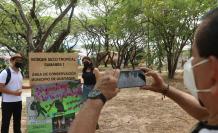
Citizens: “They finally listened to us and the forest is already a protected area”
Read more
The same experience is perceived by pedestrians in streets such as Clemente Ballén and García Avilés, and in the surroundings of Parque de la Kennedy, where the paths are also narrow; on avenida 47 NO in Ceibos; in the 2nd. Passage 32 NO, between Juan Tanca Marengo avenue and Dr. Emilio Romero street …
“If only the sidewalks were wider, getting around the city would be nice. And it is that the trees are not the problem, they never will be, they are the ones who make a picturesque area”, Details the also urban planner Emilio Flores.
Neighborhoods.In Sauces, Samanes, La Alborada, La Saiba, La Pradera, October 9, it is common to see this problem. It is even higher on sidewalks that have never been regenerated.
On what to do in these cases, both experts consulted propose -expand the spaces in such a way that they have a width of two to two and a half meters-; and that in the specific case of the General Cemetery, one of the areas where the problem is most reflected, the outer wall is collapsed and built a couple of meters inland to gain space.
Little is thought about the pedestrian and the trees, although one helps the other to live. The Cabildo’s investment should be allocated to works that allow us to feel comfort, not fear or stress.

JCDecaux: “We do not explode the fences or block the way”
Read more
“It would be great to do it, if you don’t want to take space out of the artery, although you could. In fact, the flower vendors could also build internal cubicles, similar to the ones built at the foot of the Vicente Rocafuerte school, where the area was cleaned and it became habitable, ”says Cóndor.
On what is expected to be done at these points, EXPRESO questioned the Municipality of Guayaquil, but until the closing of the edition there was no response. He also did not specify if maintenance work will be done on the sidewalks of the cemetery, that remain broken, with holes and pieces of cement raised.
Carlos Espinel, manager of the Guayaquil Charity Board cemetery, to which the General Cemetery belongs, however, referred to the issue. He said they have started to regenerate them. And although on the suggestion of knocking down the wall, he assured that it was not feasible, since in the fence “there are niches for remains, where a large number of people are buried,” he said that the work they carry out does not include the expansion. What, to say of the citizens, reflects a half aid.

Guayaquil: “Not a video game has as many obstacles as our paths”
Read more
“Sidewalks must be inclusive. The arrangements will only serve one group of people. If you want to achieve a comprehensive change, the Cabildo, the ATM, people with disabilities, everyone must intervene, ”said Xavier Lozano, resident of the nearby town, La Atarazana.
According to the president of the Sustainable Environment organization, Xavier Salgado, although some of the failures are inherited from past administrations, others are still being committed at the sight and patience of the citizens and hignoring the public recommendations of urban planners. He gives as an example the planting of urban trees in a section of Barcelona avenue, where the bike path crosses, and the placement of flowerpots on the sidewalk. All in the same place.
Trees should never be cut down and in order to never see them as an obstacle, it is the duty of the authorities to see where, for what purpose and what type of species they plant.
For Salgado, other obstacles are also seen on the sidewalks that are not necessarily so narrow, but that leave minimal space for pedestrians due to “poorly executed pruning”, the roots grow in such a way that they lift up the soil, cement and earth.
“All this responds to an obvious bad planning. It is the obligation of the authority to investigate and think about which are the appropriate trees, whether or not they will run into cables, whether their roots will grow inward, what is the size of their canopy; and yes, never take them out. Every tree counts, ”he warns.
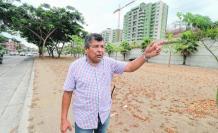
Los Alamos proposes a green area in the avenue parterre
Read more
For him, as well as for Flores, a measure that could be taken on the sidewalks attached to the main roads, is to shorten the lanes of the Metrovía to gain space.
From the point of view of the architect and urban and territorial planner Luis Alfonso Saltos, another concept that, taking these scenarios into account, is worth adopting now, is that of creating macromanzanas in Guayaquil, like those in Barcelona in Spain. “That would allow for pedestrianized areas inside these, everything would be solved. “That the trees occupy the space that corresponds to the walker is something that we see in himunregenerate and old paths, and must be remedied. Before, to build a sidewalk only the minimum width was considered, it was done by obligation, not to facilitate the passage of the citizen. This cannot happen anymore. There are ways to change the scene, “he said.
- A plan to implement in the center
Give value to the landscape to give comfort to the pedestrian
An urban planner proposes to revitalize the architectural heritage of the place
The architect Felipe Espinoza, a professor at the University of Guayaquil, proposes a series of measures, also related to how rescue the trees and give the pedestrian space, especially in the center. One of the areas, in his opinion, with the most heat islands.
For him, the strategic line of the center must incorporate into its structure social inclusion and the democratic distribution of public space, such as social, tourist and cultural spaces. In the framework of this line, he explains, two territorial programs could be developed: Articulated Center and Living Center. The first one that values the landscape and urban heritage and incorporates strategic corridors and revitalizes the appropriation by existing public spaces; and the second, which seeks to revitalize them by associating the architectural and urban heritage, through the reconfiguration of parks and the pedestrianization of roads.
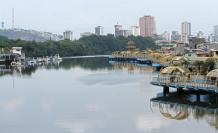
Seven actions to make Guayaquil more livable
Read more
For this, Espinoza suggests some measures (see attached data), among which are the fact of rearranging the roads to reduce or increase the areas for vehicles and pedestrians and include bike paths at the level of the road; Y set slow traffic in certain areas to prioritize it to pedestrian safety.
“In Guayaquil, although it should be mentioned in the land use plan, there is no public space plan, as other cities have. However, these measures are basic to opt for that change that is urgent for us here ”, he thinks.
Road pedestrianization: It implies giving exclusivity to the pedestrian in certain sections of the roads that make up the center to promote commerce and the appropriation of these spaces, providing citizens with functional spaces for recreation and leisure.
- Spatial reconfiguration: It proposes reordering the uses or activities that are carried out in public spaces and meeting places to improve functional and design conditions.
Promote cultural tourism: Strengthen tourism in assets of cultural interest and their surroundings, will revive the place. But this will be necessary taking into account the two previous points.

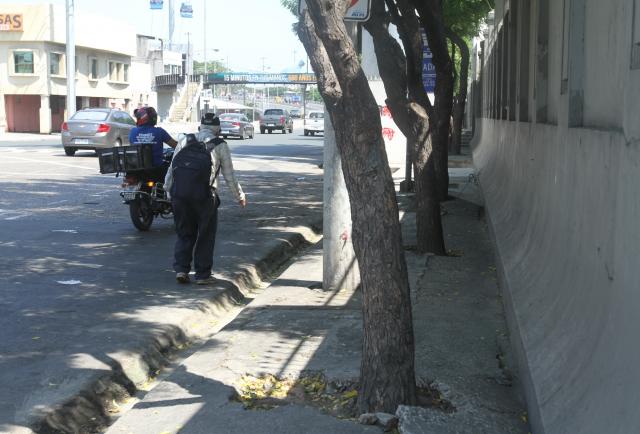

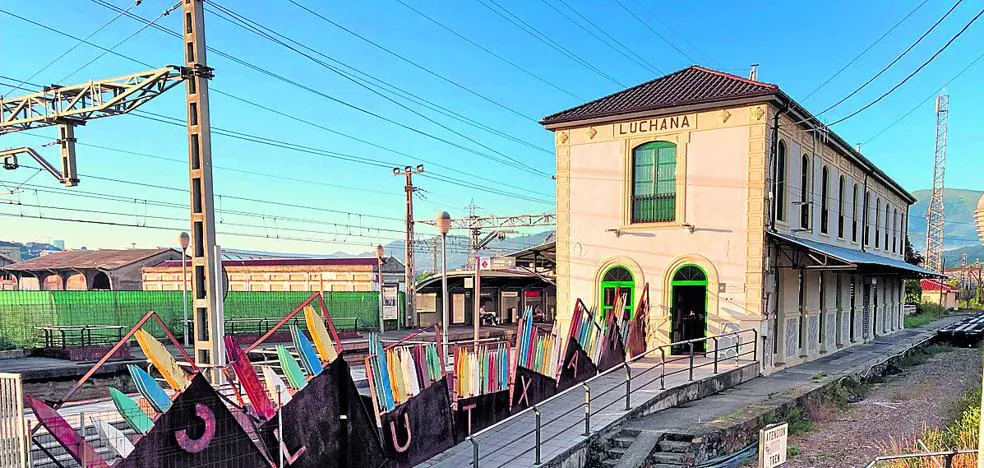
:quality(85)//cloudfront-us-east-1.images.arcpublishing.com/infobae/HD3Q3ECTYFF65EDI2VNYVUZDNM.jpg)
